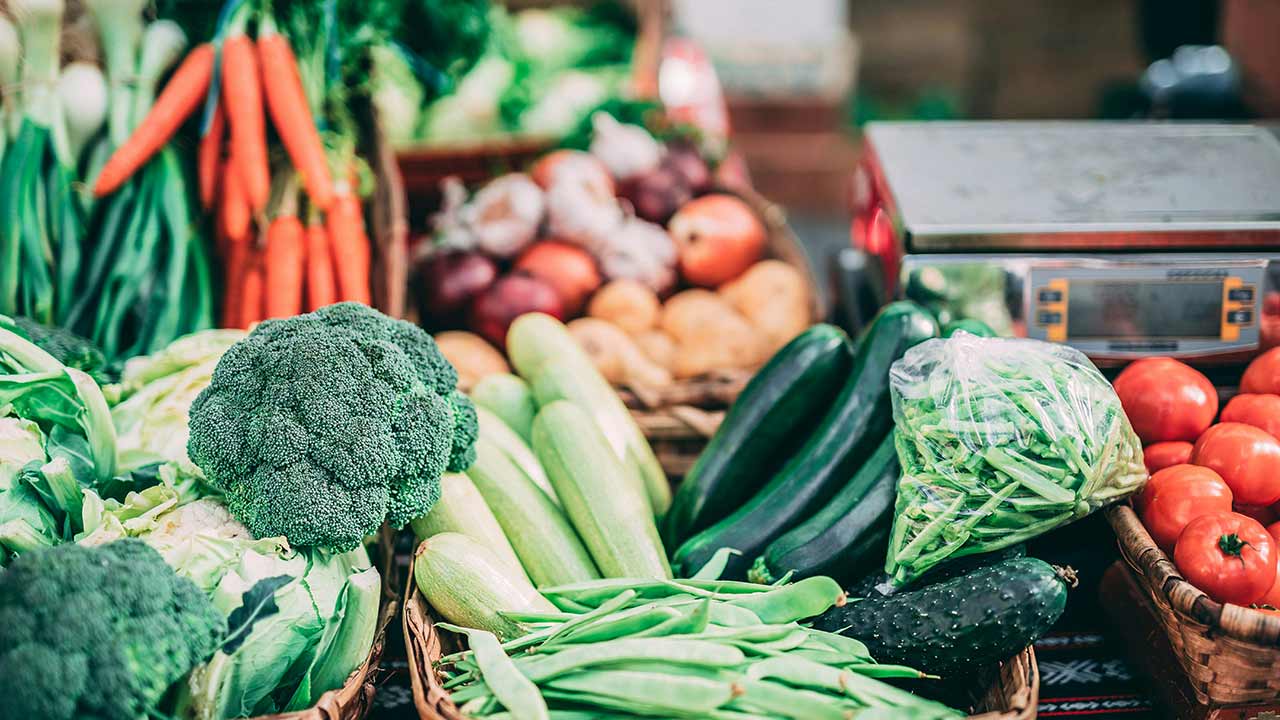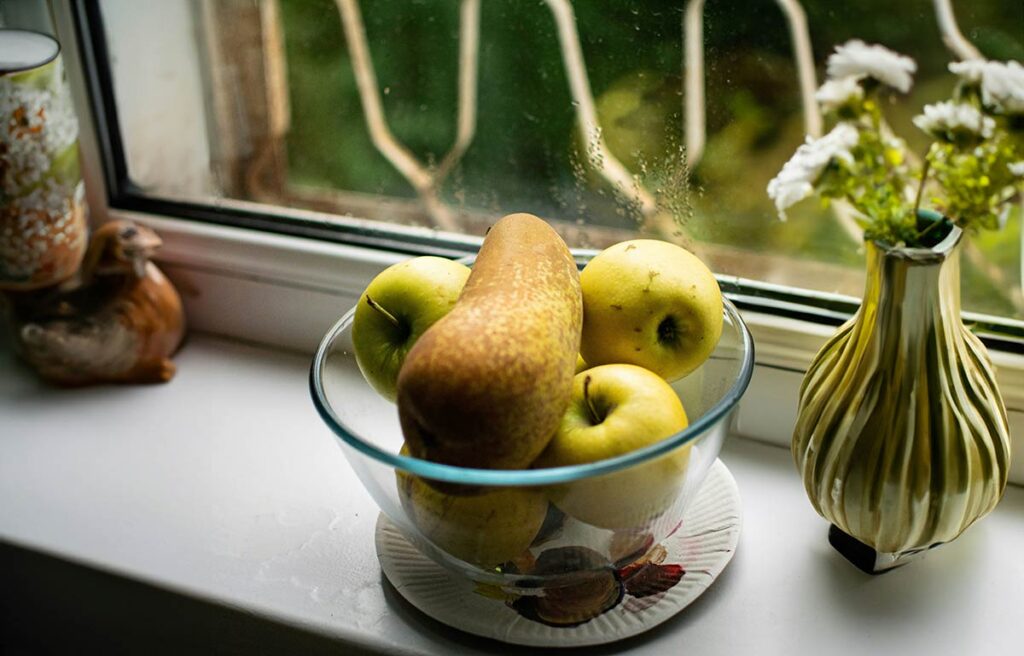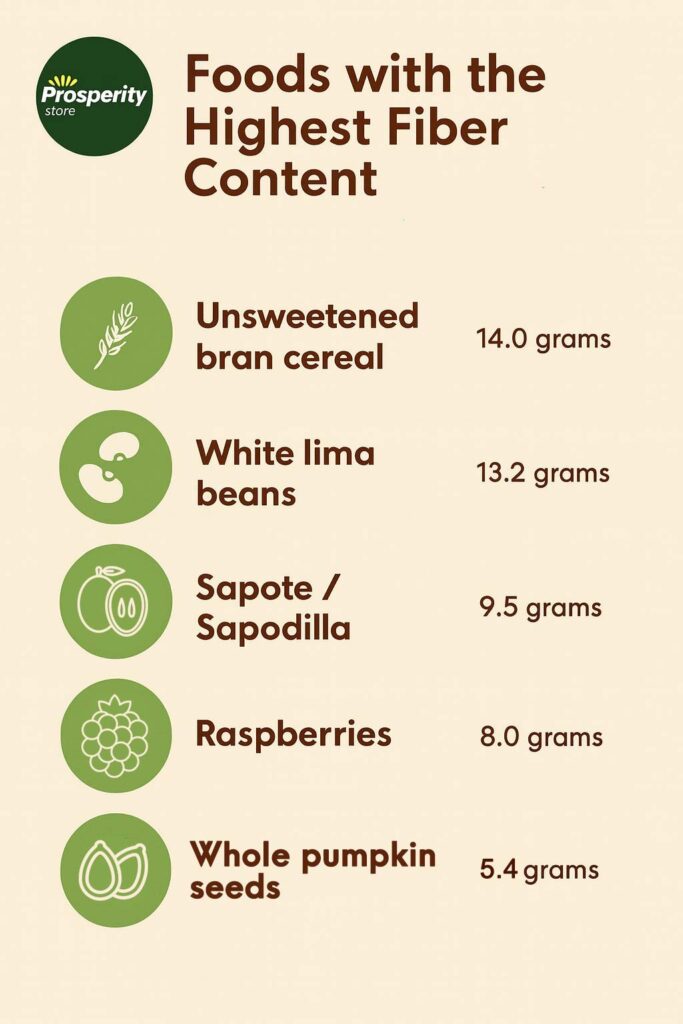20 High-Fiber Foods to Add to Your Diet
Summarize

Dietary fiber is essential to human health in numerous ways, from supporting a healthy heart to improving digestion. The current Dietary Reference Intake (DRI) for dietary fiber for women aged 19-50 years is 25 grams, and for women 51 and older, it is 21 grams. Men aged 19-50 years or older need 38 grams daily, and if 51 or older, 30 grams per day. Of concern is that most adults consume about 15 grams per day, falling significantly short of the DRI. Adding fiber to a diet is easy when one is familiar with high fiber foods.
What Is Fiber?
The National Academy of Medicine defines fiber in two ways. Dietary fibers are fibers in plants and are nondigestible carbohydrates and lignans (polyphenols, which are natural antioxidants). Functional fibers are extracted from plants or manufactured as synthetic fibers and are also nondigestible.
There are many types of fibers, such as cellulose, hemicellulose, lignin, guar gum, beta-glucans, pectin, and more. Manufactured fibers from natural plants or synthetically produced fibers include psyllium, polydextrose and polyols, and concentrated forms of pectin, oligosaccharides, inulin, gums, and resistant starch.
Types of Fiber
In simplest terms, dietary fiber consists of carbohydrates that the body is unable to digest. There are two types of fiber.
Soluble fiber
Soluble fiber obtained from foods attracts water and becomes a gel in the digestive system, which is fermented by colon bacteria. This water-soluble fiber slows the digestive process and increases stool bulk. It is found in foods that include nuts and seeds, oats, barley, lentils, peas, beans, vegetables like carrots and broccoli, root vegetables, and fruits like pears, apples, and citrus fruits.
Insoluble fiber
Insoluble fiber is not water-soluble and is believed to speed food passage through the stomach and intestines. It also bulks up stool and promotes regularity, but differently compared to soluble fiber. Insoluble fiber remains undigested primarily during the digestive process and does not undergo fermentation by colon bacteria. The sources include tree fruits with edible skins, such as apples and pears, as well as green vegetables, cauliflower, potatoes, legumes, whole grains, and nuts and seeds.

What Are the Health Benefits of Fiber?
A diet that is rich in fiber, both insoluble and soluble, delivers many health benefits backed by research.
- Maintains bowel movements and prevents constipation by softening stool while also preventing loose stools.
- Prevents hemorrhoids and diverticular disease from forming or worsening.
- Assists with stabilizing glucose and insulin levels.
- Delivers cholesterol-lowering properties.
- Helps with weight loss, improving BMI, reducing lower body fat, and decreasing the waist-to-hip ratio.
Fiber acts like a prebiotic by increasing microbiome function, so it supports a healthy gut, which improves immune system regulation.
20 High-Fiber Foods
What specific foods are high in fiber? There is a nice selection of foods that are healthy and rich in fiber. They include foods for breakfast, lunch, dinner, and snacks. The following foods are a sample of foods on the Dietary Guidelines for Americans list of nutrient-dense dietary fiber food sources. The grams indicated are for a standard portion or serving.
High-Fiber Foods Chart
| Category | Food Item | Serving Size | Fiber (g) |
|---|---|---|---|
| Cereals | Unsweetened bran cereal | Standard portion | 14.0 |
| Whole grain kernel cereal | ½ cup | 7.5 | |
| Fruits | Sapote / Sapodilla | 1 cup | 9.5 |
| Raspberries | 1 cup | 8.0 | |
| Asian pear | 1 medium | 6.5 | |
| Apple (with skin) | 1 apple | 4.8 | |
| Blackberries | 1 cup | 4.6 | |
| Banana | 1 medium | 3.2 | |
| Vegetables | White lima beans | 1 cup | 13.2 |
| Navy beans | ½ cup | 9.6 | |
| Green peas | 1 cup | 8.0 | |
| Lentils | ½ cup | 7.8 | |
| Cooked broccoli | 1 cup | 5.2 | |
| Turnip greens | 1 cup | 5.0 | |
| Carrots | 1 cup | 4.8 | |
| Baked potato (with skin) | 1 potato | 3.9 | |
| Nuts/Seeds | Whole pumpkin seeds | 1 ounce | 5.4 |
| Whole-grain kernel cereal | 1 tablespoon | 4.1 | |
| Almonds | 1 ounce | 3.5 | |
| Sunflower seeds | 1 ounce | 3.1 |
Starting the day with high-fiber breakfast foods and incorporating fiber-rich foods in the meals and snacks throughout the day makes it easy to reach the recommended daily fiber intake. If an individual has health issues, the diet can be adjusted to include high-fiber foods that may specifically support health. This flexibility allows tailoring the diet to unique health needs.
📜
For example, add high-fiber foods to meals for weight loss, like plenty of green, leafy vegetables and unprocessed whole grains like brown rice and quinoa.
Some of the best high fiber foods for constipation include oatmeal, raspberries, and beans, which provide both insoluble and soluble fiber.
Eat a good variety of high fiber foods for gut health. Good fiber sources include the following.
- Whole grains, like whole wheat bread and bran flakes cereals
- Legumes, such as kidney beans and chickpeas
- Fruits like apples with skin left on, dark colored berries, pears, and oranges
- Vegetables that include green peas, carrots, collard greens, and broccoli
- Nuts, such as almonds and pecans
Knowing which foods are high in fiber helps with meal planning, but it is equally essential to be aware of the foods to avoid. Consuming processed and prepared foods can offset the health benefits of fiber-rich foods. When buying labeled food, it is crucial to check the nutrition facts, but do not just look at dietary fiber. A nutrition label may say a serving has 25% or 7 grams of fiber, but how much added sugar, saturated fat, and cholesterol does a serving deliver? Sugar and saturated fat can cause or worsen constipation.

Fiber is Essential to Health
Consuming the recommended amount of dietary fiber contributes to good health at any age. Mix food choices to ensure the diet includes soluble and insoluble fiber for maximum benefits. For example, soluble fiber stabilizes glucose levels, while insoluble fiber prevents constipation. This is why it is important to eat a variety of high-fiber foods and consume enough products to reach 25-35g of fiber per day, depending on your weight and gender. The ideal way to ensure the recommended amount of fiber is consumed daily is to include high-fiber foods in every meal. A healthy diet is a blend of healthy nutrients.
Sources
- https://www.ncbi.nlm.nih.gov/books/NBK559033/
- https://nap.nationalacademies.org/catalog/10490/dietary-reference-intakes-for-energy-carbohydrate-fiber-fat-fatty-acids-cholesterol-protein-and-amino-acids
- https://nutritionsource.hsph.harvard.edu/carbohydrates/fiber/
- https://www.ncbi.nlm.nih.gov/books/NBK559033/
- https://pmc.ncbi.nlm.nih.gov/articles/PMC7352291/
- https://pmc.ncbi.nlm.nih.gov/articles/PMC3257631/
- https://pmc.ncbi.nlm.nih.gov/articles/PMC5731843/
- https://pmc.ncbi.nlm.nih.gov/articles/PMC9020749/
- https://www.dietaryguidelines.gov/resources/2020-2025-dietary-guidelines-online-materials/food-sources-select-nutrients/food-sources-fiber
- https://www.niddk.nih.gov/health-information/digestive-diseases/constipation/eating-diet-nutrition
Share this post
